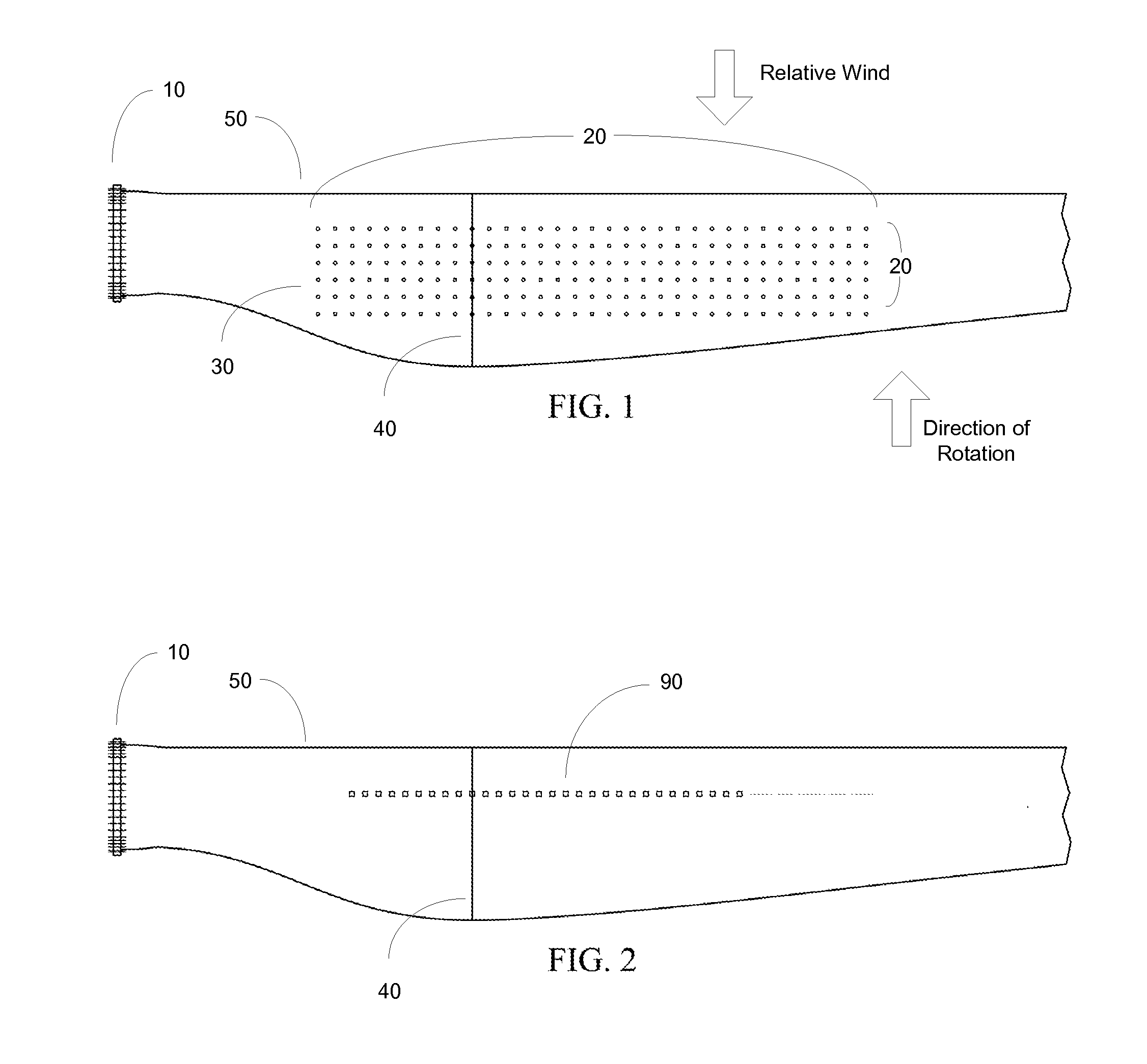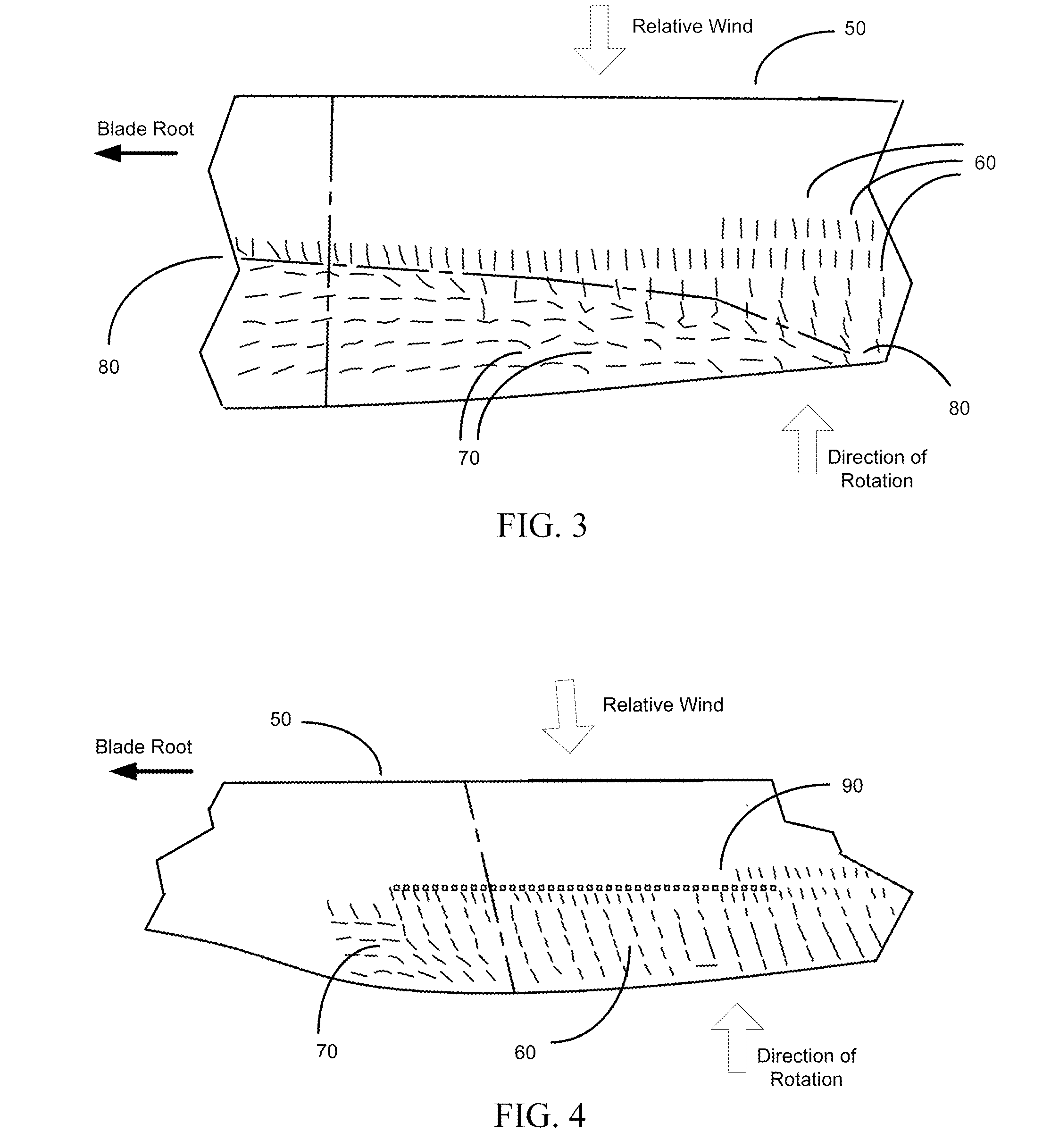Method for determining optimum vortex generator placement for maximum efficiency on a retrofitted wind turbine generator of unknown aerodynamic design
a technology of aerodynamic design and optimum placement, which is applied in the direction of machines/engines, mechanical equipment, instruments, etc., can solve the problems of complex control and equipment, consuming energy, and being subject to components failure, so as to improve the aerodynamic drag of the blade, improve the mixing effect, and improve the aerodynamic effect of the blad
- Summary
- Abstract
- Description
- Claims
- Application Information
AI Technical Summary
Benefits of technology
Problems solved by technology
Method used
Image
Examples
Embodiment Construction
[0027]In FIG. 1, a portion of a blade having a representative length of approximately 37 m is viewed from a position directly perpendicular to the direction of blade rotation, which is upward in the diagram. As many of the aerodynamic concepts relating to wind turbine blades were developed through studies of airplane wings, the terms “wing” and “blade” may be used interchangeably herein except as otherwise noted. “Z” numbers indicate distances in mm from the blade root (Z=0) to various points along the span of the blade. The defined area for placement of VGs 20 is between 10% and 40% of the wing (blade) span, measured from the root 10, and from 20% to 70% of the maximum chord 40, measured from the leading edge 50. Stall flag (“telltale”) locations 30 are shown within the defined area 20 on the surface through a pattern of dots located between Z=3700 and Z=14,800 along the wingspan, and between 20% and 70% of the maximum chord distance 40 from the leading edge of the blade 50.
[0028]T...
PUM
| Property | Measurement | Unit |
|---|---|---|
| Fraction | aaaaa | aaaaa |
| Fraction | aaaaa | aaaaa |
| Fraction | aaaaa | aaaaa |
Abstract
Description
Claims
Application Information
 Login to View More
Login to View More - R&D
- Intellectual Property
- Life Sciences
- Materials
- Tech Scout
- Unparalleled Data Quality
- Higher Quality Content
- 60% Fewer Hallucinations
Browse by: Latest US Patents, China's latest patents, Technical Efficacy Thesaurus, Application Domain, Technology Topic, Popular Technical Reports.
© 2025 PatSnap. All rights reserved.Legal|Privacy policy|Modern Slavery Act Transparency Statement|Sitemap|About US| Contact US: help@patsnap.com



